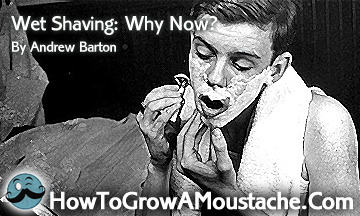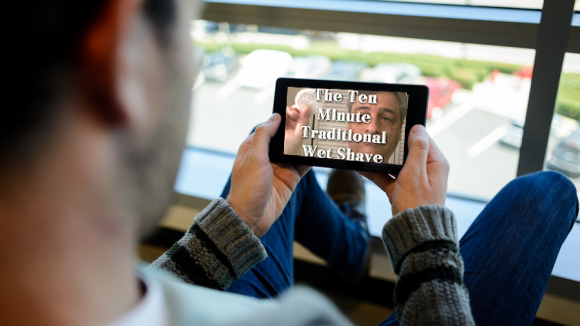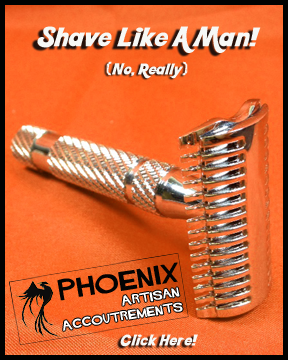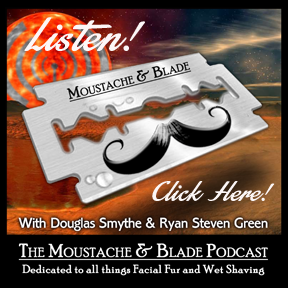Flexing balls, six blades, vibrating motors, aloe lubricating strips, contoured edges — all design choices the mass-market shaving corporations have been making lately. Since the early 1970’s, safety razors have been abandoned by the big companies in favor of multi-blade , “technology infused” disposables.
 Recently, the major shaving industry has been floundering as margins become almost as narrow as the blades they cram into those molded plastic heads. The major companies, such as Proctor & Gamble (parent company of Gillette) and Energizer (parent company of Schick), have placed the blame on trends and style fads — namely, “The Hipster.” It’s the reasoning of the major players that the increased love for facial fur has decreased the demand for their products. It’s an interesting ideology, for sure, but I’m fairly certain it’s completely incorrect.
Recently, the major shaving industry has been floundering as margins become almost as narrow as the blades they cram into those molded plastic heads. The major companies, such as Proctor & Gamble (parent company of Gillette) and Energizer (parent company of Schick), have placed the blame on trends and style fads — namely, “The Hipster.” It’s the reasoning of the major players that the increased love for facial fur has decreased the demand for their products. It’s an interesting ideology, for sure, but I’m fairly certain it’s completely incorrect.
I’m going to focus on another industry for a moment, in particular, fast food. McDonald’s, a company so large it’s often referred to as an economy of in and of itself, is in a serious bind. Store sales are down 3.7%. This trend has been going on for years now. Many economists have speculated as to why McDonald’s is falling behind the profitability pack, and it’s not really hard to see why — Millennials.
Millennials are a threat to McDonalds business model, designed around the efficiency of pre-designed food items. There’s little room for customization in their products — ask for a “Frappe” with skim milk and see what your answer is. This is a bit of a turn-off to the millennial generation, who is willing to pay more and wait longer for a more quality, personal, healthier product.
Millennials aren’t fans of one-size-fits-all designs. They don’t listen to a complete album; they make playlists of their favorite songs. They don’t eat pre-designed food; they build their own burritos at Chipotle, and customize their coffee at Starbucks. Millennials don’t buy outfits off a mannequin in a department store; they visit multiple stores and piecemeal their favorite outfits together. They don’t want to use the same canned shave gel as their neighbor. Millennials are the generation of personalization and customization.
Like McDonalds, Proctor & Gamble, Schick, and even Bic, have been focused on the “one shoe fits all” idea of manufacturing and design. Their options for razors are relatively limited, and their shave accouterments, are also just as limited. Walk into your local big-box and you’ll find about four to five razor options, and three to four accoutrements options from any Moustache and Beard Shave manufacturer. This is a relatively small selection, and doesn’t offer a lot of room for Millennials to express their individuality, and their preference for customization.
In the realm of wet shaving, the options are endless. Artisan soaps, vegan, tallow, blades, razors, pre-shaves, aftershaves, balms, cold, hot — the options are a veritable smorgasbord of possibilities and combinations. Just as important, however, is cost. Millennials are willing to pay more for a quality product, ergo Starbucks, Chipotle, and Panera. They’re more likely to become brand-loyal, however, if the products are of higher quality without the price.
Millennials are more likely to research a product than previous generations. They like to read reviews and look for “stars.” They’re less likely to make impulse buys, and more likely to focus on “all-natural” and “organic” factors. Millennials look for small companies with social and ecological responsibilities. This makes wet shaving significantly more attractive to the millennial population than purchasing chemical infused goop and plastic based razors from multi-million dollar conglomerates.
Wet shaving is also a time for personal relaxation and self focus. It’s regarded as a “manly” way to shave, with the realistic undertones of the (now dying-and-soon-to-be-dead) “metrosexual” movement that occurred over the past few decades. Holding a chrome razor to your throat is masculine, while the art of the pre-shave, lather, grain passes, and post shave provide a clean and personal experience. It harkens images of early twentieth century culture, when men were perceived to be more masculine. It also allows a pleasurable time to slow down in todays every increasing demand for time.
While the facial hair has made a comeback, Gillette would be smart to look back to its roots. They’re the company that started it all, and if their market research were any indication, they’d probably make a buck or two on the designs of yesteryear. The lack of profitability could have more to do with changing trends on the consumer mindset and demographic than just the growth of facial hair.
In the mean time, I’ll take the comfort of wet shaving knowing my money is being well spent (and less of it at that). I like supporting small companies, such as HTGAM, Stirling, Tiki Bar Soap, and so many others. I like the natural aspect of chemical-free shaving. I like the choice and diversity. I like the moment to slow down and relax, focusing on my personal taste and preference. Then again, I am a millennial.
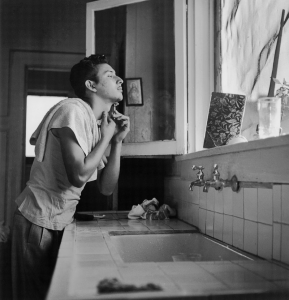 Andrew Barton Located in Central Florida, Andrew works as a fireworks technician for the largest vacation resort in the world. He’s also a student pilot, working towards his commercial license. When he’s not working or flying, he’s advocating Wet Shaving to his friends and colleagues, promoting the revolution back to yesteryear’s facial fur management.
Andrew Barton Located in Central Florida, Andrew works as a fireworks technician for the largest vacation resort in the world. He’s also a student pilot, working towards his commercial license. When he’s not working or flying, he’s advocating Wet Shaving to his friends and colleagues, promoting the revolution back to yesteryear’s facial fur management.

